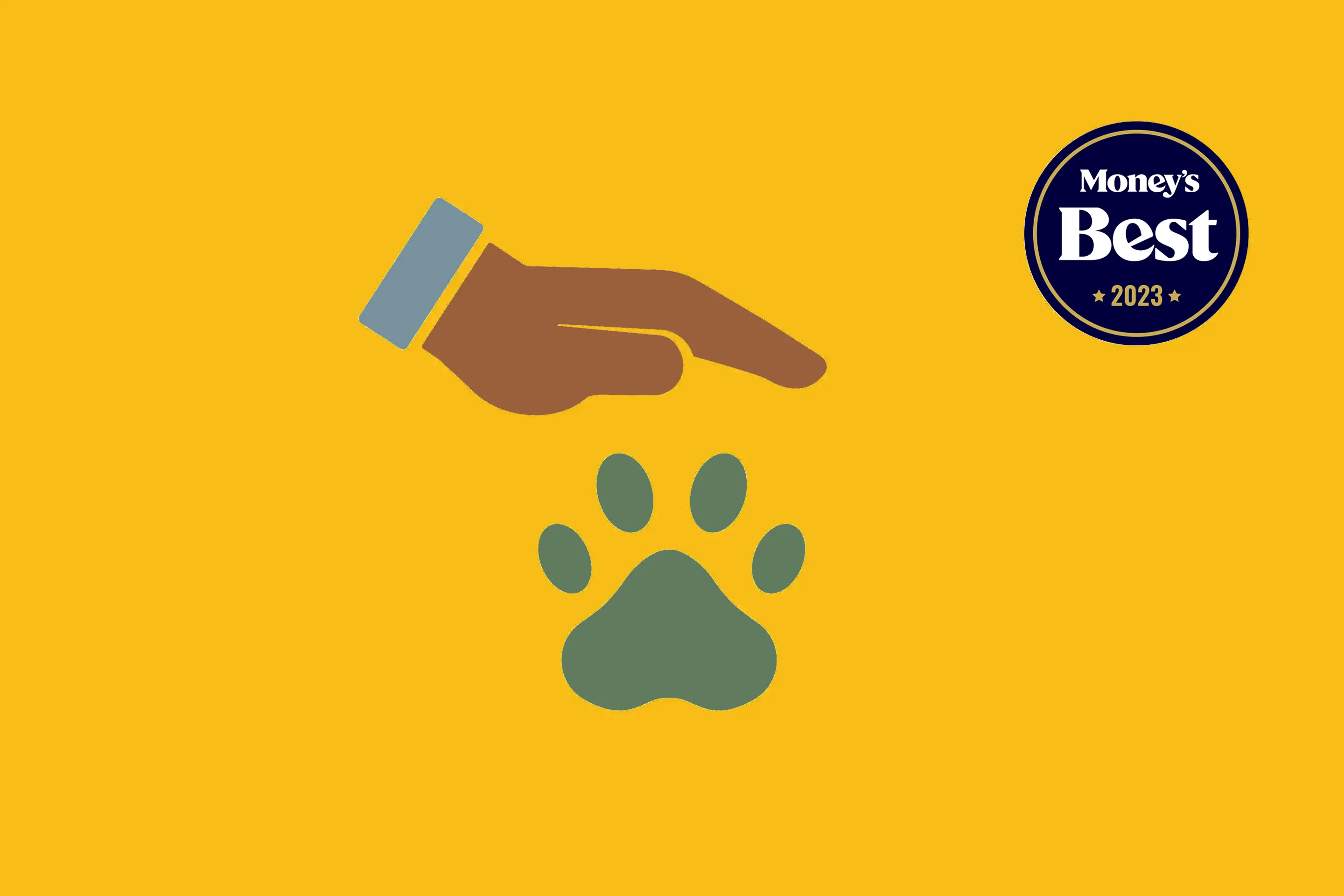Cats vs. Dogs? When It Comes to Pet Insurance Premiums, There's a Clear Winner

Some things that influence the cost of pet insurance aren’t easy to change, such as the zip code in which you and your pet live. Which only makes it smart to take advantage of factors you can control to get a policy for less.
The steps below are all proven to reduce pet-insurance premiums, which average about $50 a month for a dog and about $30 for a cat. Admittedly, some involve the kind of pet you own, and so won't help current owners — except perhaps to keep in mind for future furry acquisitions. Others involve researching ways to save. The rest are policy features you’ll need to consider in tandem, to arrive at the balance that suits your budget and your pet ownership style — like the size of annual deductible you can afford, and the proportion of each vet bill you’ll get reimbursed after that.
Together, these seven moves can help you significantly reduce the cost of insuring your pet.
Get a cat rather than a dog
If you happen to be pet shopping, and you’re open to either a cat or a dog, you can save significantly on insurance by favoring a feline.
When Money surveyed premiums for both species from five companies, dogs cost an average of $250 more a year for popular comprehensive (accident and illness) plans, and the gap was about the same for policies that also included wellness coverage. Despite the fact that dogs live fewer years on average, you could still easily spend $1,500 more over its lifetime to insure a dog rather than a cat. Dogs cost more to insure than cats, in part due to data that shows they more often require care than cats, and it’s more expensive when it’s needed.
Adopt a mixed-breed pet
Mutts are less disposed to suffering serious hereditary, congenital, or chronic conditions than are some breeds of both dogs and cats. For example, a 15-year study of dogs found that mixed-breed animals had a significantly lower risk of contracting 10 of 24 disorders evaluated.
For example, dog breeds that tend to be brachycephalic (like French and British Bulldogs, Pugs, Boston Terriers, Lhasa Apsos, Cavalier King Charles Spaniels, and others) have trouble breathing and must work harder to cool their body temperature. These breeds also disproportionately suffer from brain disorders, skin cancer, fungal skin disease, difficulties giving birth, and back problems.
Certain cat breeds, too, are more prone to certain conditions than the general cat population. For example, purebred Abyssinians and Siamese, among other breeds, more often suffer from amyloidosis, a condition in which certain proteins in the cat’s blood cause liver and kidney problems.
Even with a pet of a problematic breed, odds are it won't develop a hereditary condition. But the comparatively high possibility of that, and the hefty costs if they do, translate into higher premiums. (For example, a soft palate resection for a brachycephalic dog can alone cost up to $1,500, and might be only one of several such procedures the animal requires.)
When Money surveyed premiums across five dog breeds, insurance for a French Bulldog cost an average of $679 a year, which was $162 more than for a Golden Retriever. (In between, in ascending order of premiums: Labradors, German Shepherds, and English Bulldogs.)
Those premium differences could easily run to a thousand dollars or more over a dog’s lifetime. And they could well come on top of a higher cost for the dog itself than for a mutt.
If you're determined nonetheless to buy a purebred pet, research the most common conditions for the breeds that interest you, using a list like the one from the Humane Society Veterinary Medical Association. Then familiarize yourself with information, including from other veterinary sources and insurers, on what those conditions could cost to treat.
Consider how many perils to insure
Chances are you’ll want a “comprehensive” policy that covers both accident and illness — as most pet owners do. You can, however, save nearly $400 a year on average on insuring a dog and more than $200 on insuring a cat by choosing an accident-only plan rather than a comprehensive one. Of course, an accident-only policy will not cover illness. (Illness-only plans, alas, are rare to nonexistent.)
A better savings strategy might be to resist adding so-called wellness coverage to your policy. Even comprehensive plans do not cover routine and preventative care, such as vaccinations, tick and flea treatments and the like; those generally require adding a wellness rider at extra cost. While the additional cost is usually far less than the premium for the comprehensive plan, so is the return, which for most pets will amount to only a few hundred dollars per year. If you forego this coverage, you can always reserve the premium dollars you’ll be saving for a fund to cover wellness visits and your co-pays for accident and illness coverage.
Shop around
As with most other forms of insurance, shopping around for pet insurance can deliver significant savings. In our survey of insurance costs, premiums for comparable coverage differed by up to about $380 a year for dogs and $167 a year for cats.
Many insurers, including Money’s top picks for pet insurance, allow you to get personalized individual quotes. Another option is to use aggregators, such as 365 Pet Insurance, which provide quotes for multiple companies.
Once you’ve gathered a number of premiums, consult the sample policies companies post on their websites, which outline the scope of coverage. While most companies offer similar coverage with plans of the same type, covered procedures they include in each — which in turn translates into higher or lower prices for you.
Choose a large deductible
As with some other forms of insurance, pet policies allow you to pick among various options that affect how much of the annual costs of care you will bear. It pays to adjust these to reach a balance of low premiums and sufficient coverage that works for your priorities and budget.
The size of your deductible dictates the amount you have to cover every year before your pet insurance plan kicks in. While deductibles can range from $100 to $1,000, the National Association of Insurance Commissioners, in 2019, found the most frequent deductible options are $250, $500, or $750.
Lower deductibles trigger higher premiums, where higher deductibles reduce rates. When we surveyed the effects of various deductibles on comprehensive policies for both dogs and cats, we found you’d typically save at least $200 a year by opting for a deductible of $500 rather than one of $200. With a higher deductible still, the savings more than double; a policy with a $1,000 deductible costs $450 less per year than one with a $200 deductible.
Go low on the reimbursement rate and annual limit
The deductible that works for your budget will also be affected by the percentage of bills your policy will reimburse. Rather than paying veterinarians directly, insurers reimburse you a percentage of your veterinary bills (after the deductible is covered). Companies typically allow you to choose between 70%, 80%, and 90% reimbursement.
Unsurprisingly, choosing a lower reimbursement rate reduces premiums — although by less, as a rule, than changing the amount of your deductible. Our price survey found annual savings on premiums of about $50 for every additional 10% of reimbursement you forgo. That is, moving from 90% reimbursement to 80% saves about $50, and opting for 70% rather than 90% saves you about $100 a year.
Now consider a further cost variable to your pet insurance: the upper limit of total annual costs you want the policy to cover. We found doubling the annual limit from $5,000, a popular amount, to $10,000 would increase premiums by more than $60 a year. Adding a further $20,000 in coverage adds about the same, for a total increase of about $130 for a $30,000 limit compared with one of $5,000.
As you decide on the best limit for you, keep in mind that you will be on the hook for part of that spending — typically between 10% and 30%, depending on the reimbursement level you’ve chosen. Don’t maximize your limit unless you are willing and able to pay four figures as a co-pay in the event your animal requires expensive procedures. For example, an $8,000 bill for cancer treatment would require you to contribute $2,400 as a co-pay.
Look for discounts
As with other insurers, pet insurance companies offer various discounts. For example, depending on the insurer, you could get up to 10% off by insuring more than one pet. Companies may offer military discounts, discounts for paying your annual policy upfront. A select few, like Embrace, even offer diminishing deductibles for every year in which you are claim-free. Sometimes it’s possible to combine a number of these discounts, allowing you to apply and benefit from more than one.
It may also save through alternatives such as veterinary discount programs like Pet Assure, or medical financing cards like Care Credit. While neither of these provide pet insurance per se, they can help defray expenses.
Pet insurance is an investment that offers the peace of mind of knowing that you won’t have to cover expensive veterinary bills completely on your own. Keeping these seven tips in mind will leave you better able to find a policy that fits your pet’s needs for less.
More from Money
What Pet Insurance Can Cover, From Aggression Therapy to Arthritis
10 Best Pet Insurance Companies of 2020
Pet Insurance Covered $25,000 of My Vet Bills: Here’s My Takeaway for Beginners




